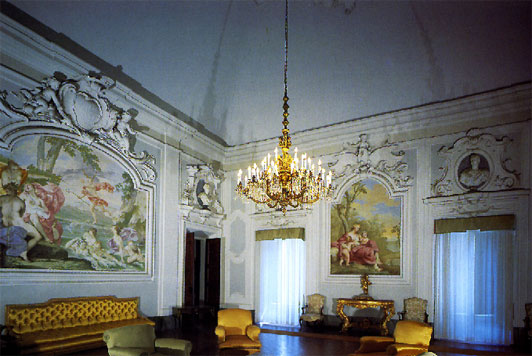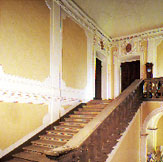
The superb Villa La Magia was completely renovated and redecorated between the end of the seventeen and the beginning of the eighteen centuries by request of Amerigo, Pandolfo Attavanti’s last- born. The renovations gave a new organisation to the building interiors, but they did not radically change the overall effect of the initial fifteenth- century residence.
Among the most demanding works made during that first months, there was the making of the monumental stairs covered by only one big vault. In order to complete the vault, several rooms, that were in the south- west zone of the house, were demolished. At that same time, the main hall was created. Together with the stucco decoration and the frescoes adorning that section of the residence, the menumental stairs and the main hall make those parts especially suitable as boardrooms.
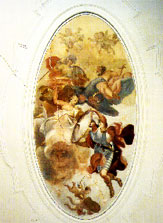
The construction site opened in Villa la Magia at the beginning of the eighteen century was, in fact, a place alive with activity: many artistic personalities were at work. Among those, we can mention the Florentine painter Giovanni Bagnoli, who in 1710 painted a fresco on the oval above the monumental stairs, depicting roman deities:the episode represented points out in the figure of Zeus and Juno the allegory of the power of love that rules above the destructive forces of war, embodied by Mars. This allusion is supported, besides the presence of goddess Minerva, by the little angels, traditionally love messengers.
There are very few works that are confidently attributed to Giovanni Bagnoli, but among those works we can mention the fresco with the Abduction of Europa, on the vault of the vestibule In front of the main hall. The scene of the “abduction” is placed in a trompe-l’œil architecture, made by the painter Pietro Cherubini. Giovan Domenico Ferretti, a painter greatly esteeemed by his own contemporaries as the most important Florentine artist of the age, worked at Villa La Magia, too. Betwwen 1714 and 1715 he completed a portion of the fresco decoration in the main hall. The series of frescoes represent, on the vault, the triumph of Virtue against the Violence and Evil, which dominate the world and, on the south and north sides of the hall, “Bacchus and Ariadne” and “Diana and Actaeon”.
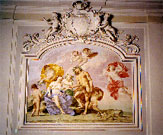
The renovations completed during the early years of eighteen century remarkably changed the Villa internal structure, but the story of its construction was not resolved yet. As a matter of fact, during the years 1723 – 1724 new construction interventions were enacted, in order to improve the static conditions of the residence east wing.
During the second half of the eighteen century Pandolfo Attavanti, Amerigo’s second son, ordered the ornamentation of the gallery on the main floor. The gallery walls were then decorated with country and cities landscapes, framed by architectural elements imitating a loggia.
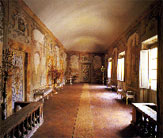
Those frescoes represent a noteworthy example of early eighteen century perspective painting. The year following the ornamentation of the gallery, Pandolfo called Tommaso Gherardini to decorate the Villa rooms.
The results were “Diana and Endymion” and “The abduction of Cephalus”on the vestibule walls. Tommaso Gherardini was an interesting personality in the artistic scene during the eighteen century, he contributed in a decisive way to the passage from Rococo to the rising Neoclassicism.
